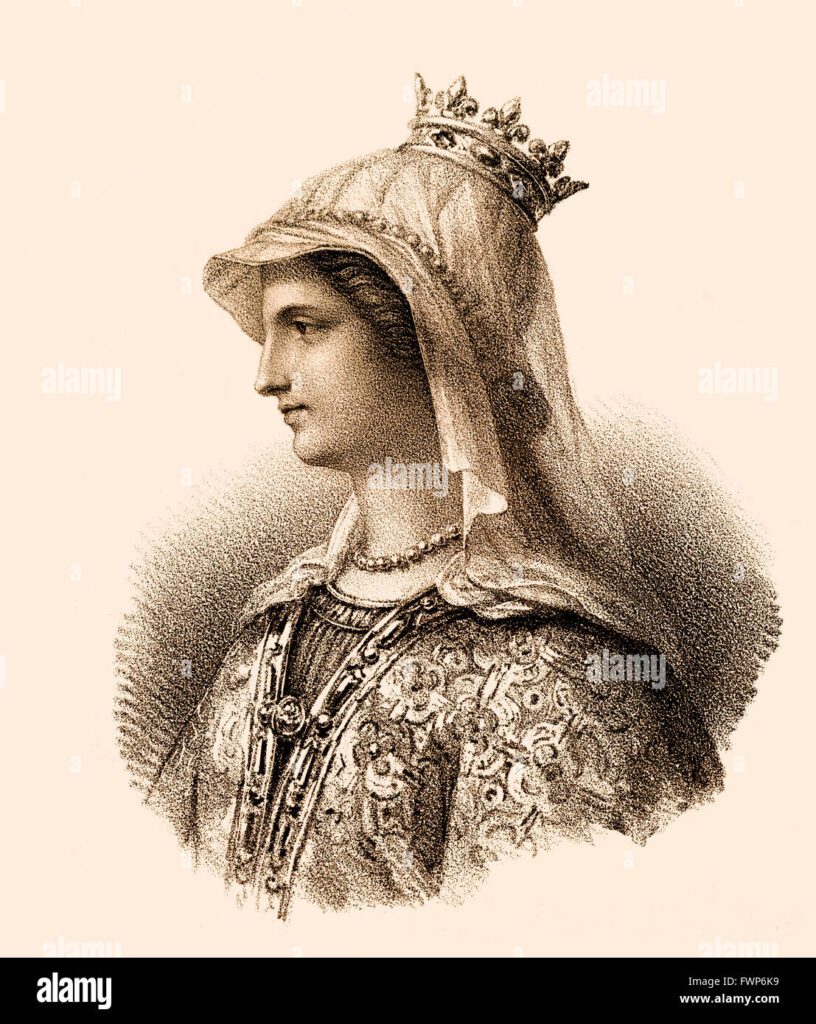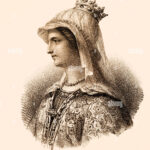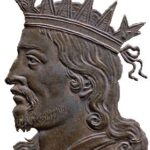
Date of Birth
520
Place of Birth
Paris, Île-De-France, France
Towns / Cities Moved Into
City of Paris, Île-de-France, France |
Soissons, Aisne, Hauts-de-France, France |
Tours, Touraine, France
Known Occupation
Queen of Franks
Religion
-
Spouse
Death Information
Year of death
Aug 13 589
Place of death
Tours, Touraine, France
Cause of death
-
Burial location
Église Saint-Germain-des-Prés
Paris, City of Paris, Île-de-France, France
Obituary

Parents

Willebald Des Burgondes

-
Marital Status


Married King Charibert I Of Paris
Siblings


Children






Narrative / Story
In the mid-sixth century, a figure of historical significance, Queen Ingoberga de Paris, graced the annals of Frankish history. Born circa 520 in the bustling city of Paris, Île-de-France, France, Ingoberga’s life was set against the backdrop of a rapidly evolving medieval Europe. Her birthplace, Paris, was a hub of cultural and political activity, laying the foundation for her future role in the Frankish kingdom.
Ingoberga’s early years were spent in the heart of the Merovingian dynasty’s power. As a young woman of noble birth, she would have been immersed in the intricacies of court life and the delicate balance of power that characterized the era. Her education and upbringing, though largely undocumented, would have been befitting a woman of her status, preparing her for the responsibilities and challenges of royal life.
The trajectory of Ingoberga’s life took a significant turn when she married King Charibert I of Paris around 558. This union was not merely a personal alliance but a strategic move in the complex chessboard of Frankish politics. Charibert I, a Merovingian king, ruled over a kingdom that was part of what is now modern-day France. Their marriage was a consolidation of power and influence, pivotal in the context of the era’s dynastic politics.
Together, Ingoberga and Charibert I had four children: Blithide of Cologne, Chrodobertus, Bertha, Queen Consort of Kent, and Charibert de Haspengau. Each child would go on to play their part in the unfolding history of Europe, with Bertha notably influencing the Christian mission in Anglo-Saxon England. This lineage underscored the importance of royal marriages in shaping the political and religious landscape of the time.
However, Ingoberga’s married life was marred by personal strife and court intrigue. According to the contemporary historian Gregory of Tours, her marriage was troubled by Charibert’s infidelities, particularly with two sisters, Marcovefa and Merofled, who were daughters of a wool worker. This domestic turmoil was reflective of the often tumultuous personal lives of medieval royalty, where political alliances and personal relationships were inextricably linked.
Ingoberga’s life was also a mirror to the broader socio-political and economic realities of her time. The Frankish kingdom, a precursor to modern France, was a realm of constant change, marked by territorial expansions and internal power struggles. The invasion of Visigothic Spain by King Childebert I and Chlothar I in 542, for instance, was a significant event of her era, indicative of the Frankish rulers’ ambitions and the volatile nature of European politics at the time.
Despite the constraints of her era, where women, particularly of royal birth, had limited personal agency, Ingoberga navigated the complexities of her role with a degree of influence and resilience. Her actions, as recounted by Gregory of Tours, suggest a woman who, despite the challenges, exerted her will and played a role in the political machinations of the court.
Ingoberga’s life was not just confined to the royal court. Her movements across various towns and cities, including Soissons and Tours, were indicative of the itinerant nature of medieval royalty, who often traveled to maintain their authority and manage affairs across their realms. These movements also reflected the broader patterns of migration and settlement during the period, as political and economic factors often necessitated relocation for many in medieval Europe.
The socio-economic landscape of Ingoberga’s time was complex. As a queen, she would have been insulated from many of the hardships faced by the common people, yet her life was undoubtedly influenced by the broader economic and social currents of the era. The Frankish kingdom, like much of Europe at the time, was agrarian, with a significant portion of the population engaged in farming and related activities. Trade and craftsmanship were also vital components of the economy, as evidenced by her interactions with the wool worker and his daughters.
Ingoberga’s death in 589 in Tours marked the end of an influential life. At the age of 70, she had witnessed and participated in significant historical events and trends. Her burial in the Saint-Germain-des-Prés Church in Paris was a fitting end for a queen who had spent her life in the service of her kingdom and family.
Reflecting on Queen Ingoberga’s life offers a fascinating glimpse into the world of 6th-century Europe. It was a time of great transition, where the remnants of the Roman Empire were giving way to the new socio-political realities of the medieval period. Her story, interwoven with the broader tapestry of history, highlights the role of women in shaping the course of events, often from the shadows of their male counterparts.
Ingoberga’s legacy is a testament to the resilience and complexity of women in history. Her life, marked by personal challenges, political alliances, and the ever-changing landscape of her time, offers valuable insights into the dynamics of power, gender, and society in medieval Europe. Her story, though rooted in the distant past, continues to resonate, reminding us of the enduring impact of individual lives on the course of history.